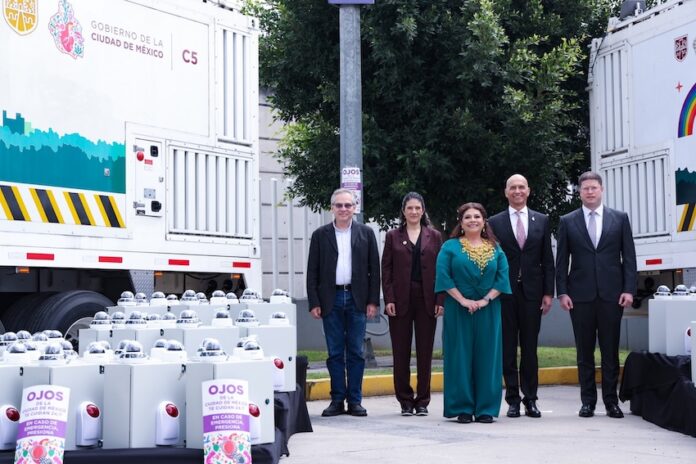Mexico City is on its way to becoming “the most heavily monitored city in the Americas,” according to Mayor Clara Brugada.
As part of an ambitious expansion program for its public video surveillance network, the capital is investing over 445 million pesos (US $23 million) to install 30,400 new security cameras on the streets of the city. The expansion will bring the number of cameras to 113,814 across the city’s 16 boroughs — 36% more than in 2024.
En #LaCapitalDeLaTransformación, gobernada por @ClaraBrugadaM, damos un paso histórico en la videoseguridad. 📈📹
Gracias al proyecto #OjosDeLaCiudad 👀📹 ahora la #CDMX contará con más de 30 mil nuevas cámaras de videovigilancia conectadas al #C5CDMX para garantizar tu… pic.twitter.com/onGyohOJU2— C5 CDMX (@C5_CDMX) August 19, 2025
That total includes 15,200 totems — also known as smart poles — that will be installed in areas with high crime rates, relevant urban facilities, and tourist public spaces, according to Salvador Guerrero Chiprés, general coordinator of the Command, Control, Computing, Communications and Citizen Contact Center of Mexico City (C5).
Each totem holds two cameras — one fixed and one with a 360-degree view, designed for urban monitoring. They feature help buttons and audiovisual alert systems, enabling rapid response to emergencies or crimes. They will also send automatic notifications to authorities when they experience a fault, removing the need for citizens or officials to report them.
During a press conference held at the C5 headquarters, Brugada noted that the new cameras will strengthen the security strategy and guarantee immediate assistance in any emergency. She said that with the additional cameras Mexico City will double or even triple the number of security cameras found in cities like New York, Chicago and Rio de Janeiro.
Do cameras help reduce crime in Mexico City?
Following the rollout of surveillance cameras and the creation of the “Safe City” program in 2010, high-impact crimes in Mexico City decreased by 23%, including a 25% drop in vehicle theft and a 20% drop in pedestrian robbery.
However, official data shows that although some types of crime (homicide, for example) have decreased in recent years at the national and local levels, others like extortion have significantly increased.
While surveillance cameras have contributed to the reduction of some crimes in Mexico City, especially in the first years after their installation, fluctuations in crimes reveal that they are not a stand-alone solution to reduce urban crime. Some studies cast doubt on whether they have any effect at all, but Mexico City’s experience shows they can at least serve as one tool within a broader security strategy.
With reports from La Jornada and Grupo Hoy México
